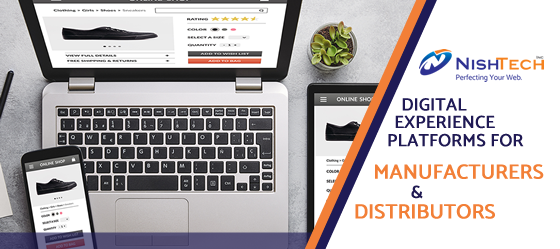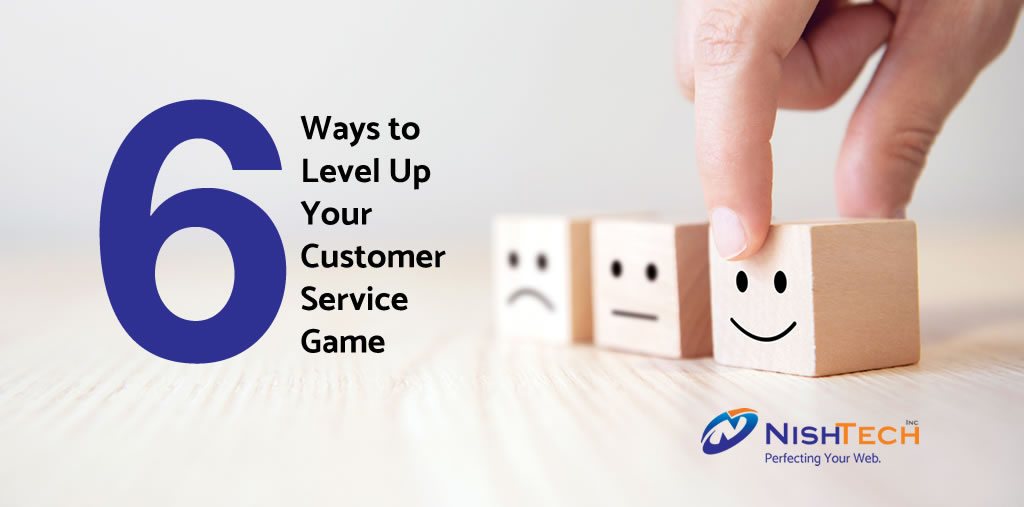9 steps to jump start your digital experience platform implementation
written by Suresh Devanan
|April 2021
Customer experience is becoming more important than content marketing, mobile optimization, and personalization. However, this isn’t surprising considering that customer experience encapsulates all of those marketing features. Many companies understand the importance of customer experience but struggle to get their feet off the ground to begin implementing a digital strategy.
These 9 steps will provide a simple roadmap and plan of action to get you started.
1) Design the ideal customer journey
Start by creating a visual workflow of how your ideal customer will navigate your site. Consider the outcomes you are seeking from your visitors and the areas of the site you want to guide them to.
In a world where everyone wants things immediately, it is essential that you try to expedite the customer journey and provide them relevant information that also aligns with your company goals. This is the beginning step but will be expanded on as you complete the rest of the steps in this guide.
2) Define goals
Every website needs to have specific goals. Whether you want customers to download a whitepaper or make a purchase, you need to define what the overall goals are of the site for each visitor or persona.
Some other examples of goals include: register for an event, sign up for a newsletter, create a user login, or request a demo.
Once you have your site goals in mind you will be able to make your customer journey more strategic and concise.
3) Define personas
Make a short list of the different personas of your site visitors. Within the list of personas, create a list of desired outcomes that you think the persona is seeking from your site as well as a list of outcomes that your company desires.
Start with the first persona being either your most common visitor or the most valuable visitor. These personas may be the same, but most times will be different.
After your personas are defined, you will again be able to further customize the customer journey for each persona.
4) Define values
Set specific numerical values for content on your site. The content that aligns with your goals and customer journey path should have higher values than those of less significance. When you’ve defined the values of the content you will be able to create pattern cards which will match a visitor to a specific persona.
For example, if your site sells recreational equipment and a visitor is comparing different disc golf drivers, the content of the products should have values that align the visitor to a specific persona. Give the persona a name that further aligns it with its details - in this case you could name this persona something like Doug the Disc Golfer.
5) Create personalization
Now that goals, personas, and values have been identified, It's time to start creating personalized content. You can promote contextual content that you feel would be the best fit for each visitor type.
Knowing that the visitor is interested in disc golf, it would be ideal to promote the content that most interests that visitor in that moment. A good example would be to promote the disc golf tournament that your company has sponsored and is currently seeking registrants. Perhaps after completing the checkout process, it would be an ideal time to let the visitor know when they would be able to use the equipment they just purchased, improving the customer experience as well as a completing a successful cross-sell opportunity.
6) Identify site visitors
One of the major benefits of a digital experience platform is the ability to identify your site visitors. There are a few different ways this can be achieved.
One of the most common ways is to require or request that the visitor create a specific login for your site. This will allow you to match that visitor’s browsing history to a specific IP address and provide more detailed insight into the visitor’s profile.
We all have far too many logins and passwords, making us a little disinterested in creating yet another site login. This is when connecting to other platforms will be helpful. It’s fairly simple to allow users to become identified visitors with a simple click to login using their Facebook, Twitter, or LinkedIn logins.
7) Integrate your digital experience platform with your CRM
Completing the first six steps has brought you to this essential component. By integrating with your CRM, you will be able to further enhance the customer experience. Information obtained on the site can be mapped to specific CRM fields and provide your sales, customer service, marketing, and support teams known information about your customers.
The CRM integration is a way to kick off the sales process and identify which stage the visitor falls within the sales funnel. An elaborate CRM integration would even allow you to personalize content on your site based on the data stored within your CRM.
8) Optimize your site with A/B testing
Your site has the key components it needs and it's now time to optimize your site to improve your desired results. An easy way to begin optimization is by implementing an A/B testing strategy.
Starting with your most valuable or most commonly consumed content item, create a variation of that content. This can be done in very simple ways, such as changing the background color of an image or rewording the sentence in the heading. Tests can be run showing which piece of content received better results and can then become the winner and full-time piece of content.
Continue doing this throughout your site on a regular basis to constantly improve your conversion rates and goal achievements.
9) Create an engagement automation plan
Most sites have far too many visitors for organizations to manually engage with each visitor. An engagement automation plan will help you to interact with your visitors without manually having to do any work.
A key example of this would be the trigger of an automatic email being sent upon a visitor abandoning their shopping cart. There could be various reasons why the visitor abandoned the cart but it is important to get that customer back and complete the sale. Sending an automated follow up email a day later will get the product back in front of the visitor and require them to again consider making the purchase. An incentive such as a percentage discount might be all it takes to close the deal.
Make sure to have a solid engagement automation plan in place to maximize personalized interactions with your customers.
Conclusion
After completing these nine steps you will have the foundation to enhance the visitor’s overall customer experience on your website. These steps are only intended to be a starting point to get your creative thoughts going and fully optimizing the site to align with your business objectives. Completing the first part of these steps will only lead to additional work and development. It will be up to you and your team to build on this foundation and become more digitally mature by creating a first class customer experience.




